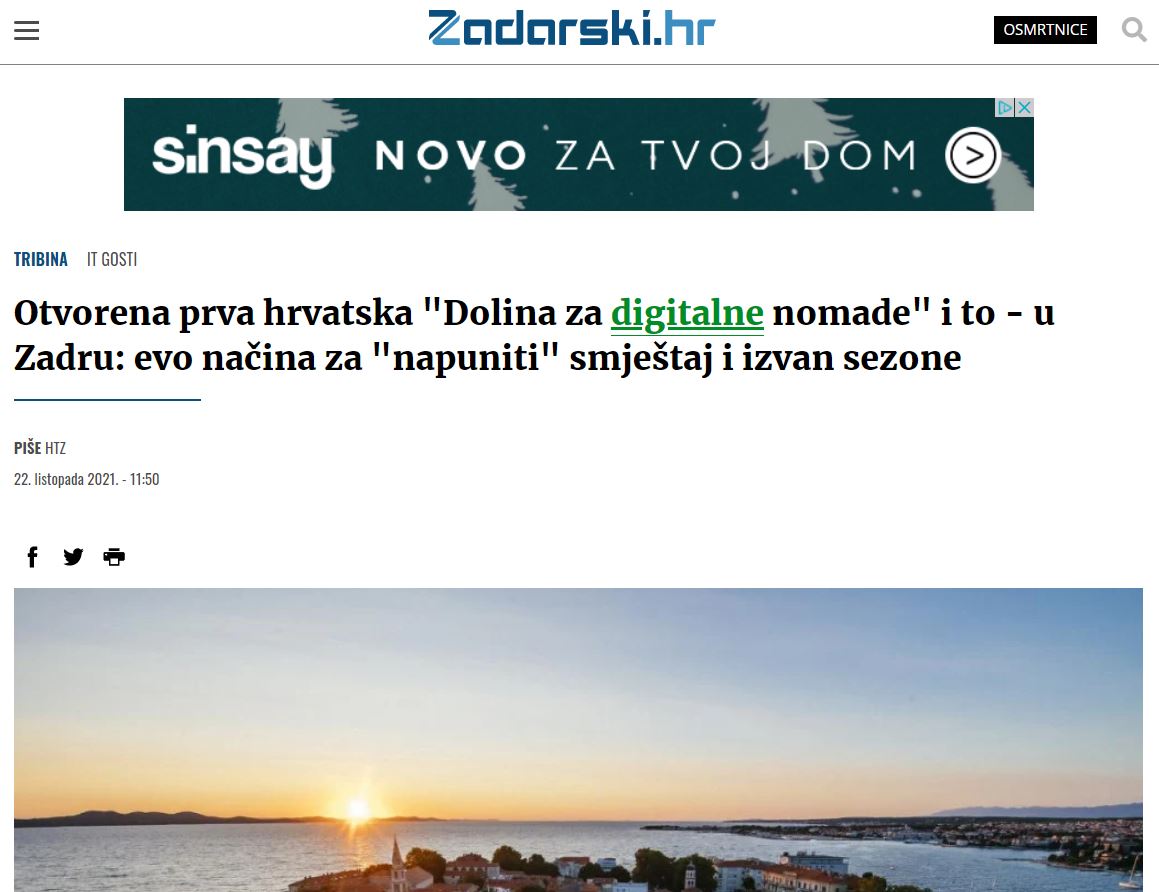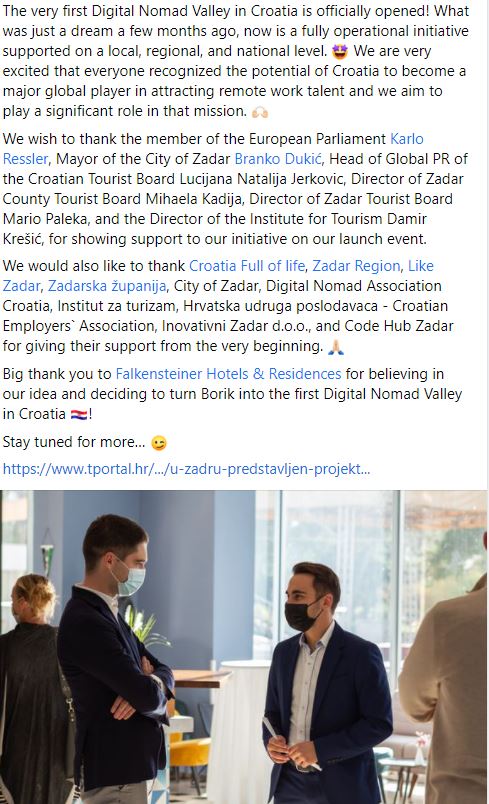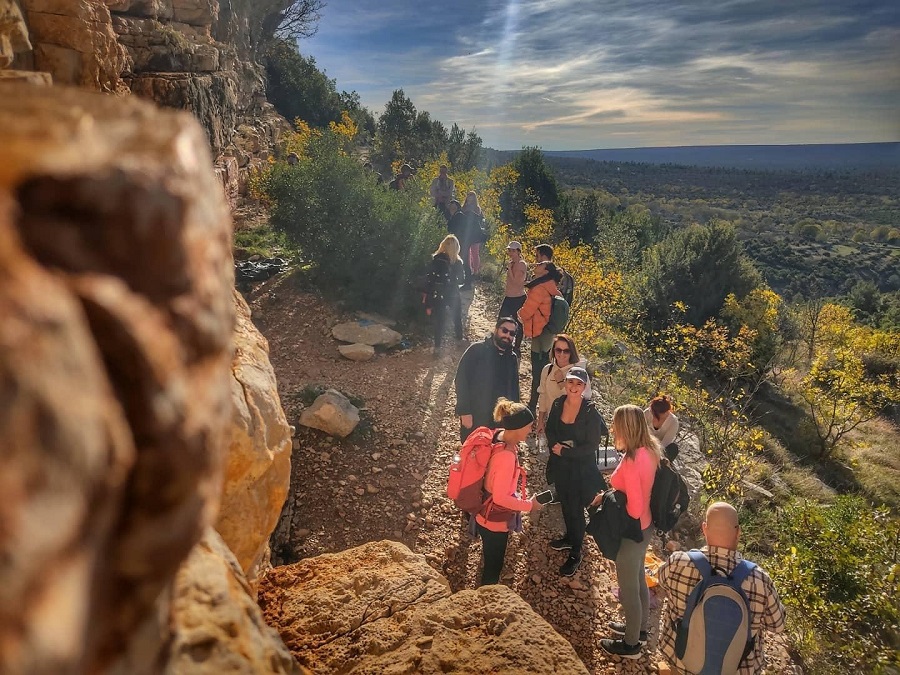Tehnix Company Wins Award for Best Innovation of 2020
ZAGREB, 2 Jan 2022 - The innovation of Đuro Horvat, that is, his company Tehnix, "Technology for Bioreactor Composting and the Production of Eco Compost", earlier this week won the "Innovation of 2020" award, as chosen by the Croatian Association of Innovators.
The three finalists competing for the award were the Tehnix company, the HS Produkt firearm producer -- with an innovation by Marko Filipović and Igor Stojković, a cell for robotic deburring, and JEL-TOM -- with an innovation by Franjo Pokrajčić, a flood protection system called Mobile Box Barriers.
Receiving the award for the best innovation, Horvat said that his company today had 600 employees and that it had long recognised the value of knowledge.
He underscored that the Croatian Agency for SMEs, Innovations and Investments (HAMAG-BICRO) had helped them with the realisation of the innovation with HRK 10 million, while HRK 20 million of their own funds was invested.
"We had an innovative approach to produce quality organic fertilizer, the basis for the production of healthy food, from biodegradable waste, which has so far been disposed of on landfills, creating major environmental problems," Horvat said.
The innovation was developed for two years, with the help of the academic community.
There is already great interest in Tehnix's award-winning innovation, Horvat said, announcing that three factories, which would employ 150 experts, would be built next year.
The president of the Croatian Association of Innovators, Miljenko Šimpraga, said that the University of Zagreb and the Croatian Association of Innovators had been working on connecting the academic community with the business sector for five years.
The Croatian Association of Innovators today has about 50 members, a third of which are associations of innovators, a third are innovative companies, and another third are faculties.
Croatia Logs 413 New Coronavirus Cases, 38 Dead
ZAGREB, 2 Jan 2021 - In the last 24 hours 413 coronavirus cases, out of 2,006 tests, and 38 related deaths have been registered in Croatia, the national COVID-19 crisis management team said on Sunday.
There are 27,544 active cases, including 1,755 hospitalised patients, of whom 228 are on ventilators, while 18,259 persons are self-isolating.
Croatia has registered 720,951 coronavirus cases to date, including 12,609 deaths and 680,798 recoveries, of which 2,726 in the past 24 hours.
To date 55.68% of the population has been vaccinated, including 66.33% of adults, of whom 63.05% fully.
EU Funds Misuse in Croatia: 35 Alleged Cases Already Under Investigation
January 2, 2022 - The European Public Prosecutor's Office (EPPO) in Zagreb's Ilica currently has 35 cases indicating possible EU funds misuse.
The State Attorney's Office submitted 25 cases of EU funds misuse after 10 November, the date after which they were obliged to submit cases within the possible competence of the European Prosecutor's Office, reports Jutarnji List. Until that date, the State Attorney's Office had submitted 10 such cases, including the one on the so-called affair software that resulted in the arrest of former Minister Gabrijela Žalac. The former minister decided that the MRRFEU would make this purchase at a price much higher than the market price for the development of software with such technical specifications and functionalities.
It is alleged that, in order to carry out what was agreed, the former minister first decided, in 2017, to conduct a negotiated procurement procedure without prior publication of a public invitation to tender, with an overestimated procurement value of HRK 9,860,000.00 (EUR +/- 1.31 million); and in that process, the companies linked to the second suspect were invited to submit their bids.
A total of 35 cases are on the table of Tamara Laptoš, who heads the European Prosecutor's Office, which also includes Tomislav Kalember and Sani Ljubičić, but that does not mean that as many investigations are being conducted. Namely, these are cases submitted by the State Attorney's Office in which suspicions of misuse of European money are expressed.
The European Public Prosecutor's Office investigates and prosecutes the following types of fraud and other criminal offenses affecting the EU's financial interests: expenditure and revenue fraud, VAT fraud (if involving two or more Member States and worth at least 10 million), money laundering of the EU budget, active and passive corruption or embezzlement affecting the EU's financial interests and participation in a criminal organization if its activities are aimed at committing crimes against the EU budget.
For more, check out our politics section.
World War II Mine on Susak Discovered in Shallow Part of Island (VIDEO)
January 2, 2021 - A World War II mine on Susak was discovered by Velimir Vrzić in the shallow part of the island.
Deep-sea explorer and Morski.hr collaborator Velimir Vrzić found another mine from the Second World War. This mine has been cocooned in the shallows of Susak Island for the last 80 years.
"It is most likely a German underwater mine left over from the Second World War. Namely, the German navy was poorly developed during the war, and due to the great indentation of the Adriatic coast, it was protected by minefields.
This mine is located on the north side of Susak Island, where one of the marked minefields was located, so it is probably one of them.
Whether it is a fishing boat that hooked the mine and dragged it into the shallows of the bay on Susak, or whether it prevented the possible landing of Allied ships on the island, will be determined by the investigation of incompetent institutions," says Velimir Vrzić.
This is the fourth mine Vrzić has found in the last two years.
All three so far (one in front of Rijeka and two on Pag island) have been destroyed by ATJ Lučko special police officers from Zagreb.
Namely, around the holidays two years ago, Vrzić discovered a naval mine of extreme destructive power. Eight decades after the Second World War, the mine was found in Pećina, at a depth of 25 meters and only a few meters from the shore, near Villa Olga, which was once the command post of the German military forces.
Last year, Vrzić discovered two naval mines in one dive on Pag Island.
"It's true. I can confirm the finding. A few days ago, I received an inquiry from my friend Petar Smojver, who is one of the most famous Croatian sailors, who noticed a strange object in a small bay on the island of Pag. I was nearby, so I headed to the position and had something to see," Vrzić told Morski then.
"With an underwater scooter at a depth of 5 meters, I found a metal object that resembles the German naval mine model EMC in its shape and appearance," said Vrzić then.
To read more about lifestyle in Croatia, follow TCN's dedicated page.
AFP Uses Croatia as a Warning Amid the Migration Problem in the Balkans
January 2, 2022 - Young people from the Balkans migrating to other European countries in search of opportunities and better salaries is already a well-known story. However, it could be more serious than it seems and AFP uses Croatia to warn about this phenomenon.
The renowned Agence France-Presse, the oldest journalistic agency in the world, published today an investigation on the migration crisis affecting several countries in the Balkan region. After their independence in the 90's, many countries in the Balkans progressively found the way to development and economic openness. However, and as reported by the AFP, to date they have not been able to compete with the opportunities and salaries found in other European countries, and the statistics are difficult to contradict.
One of the problems, they report, is the abysmal development difference in towns and localities far from the capital. And that is the case of Valandovo, a town located 146 kilometers from Skopje, which now stands out for its streets full of shops and abandoned homes, and where young people leave in large numbers in search of better opportunities.
North Macedonia has shed 10 percent of its population in the last 20 years. Around 600,000 Macedonian citizens now live abroad, according to World Bank and government data.
Abysmal economic growth and a lack of investment have clobbered the country, now home to just 1.8 million people, in its 30 years of independence.
"If you have a little over 2.4 million citizens and more than a quarter have left, then you have to seriously be worried about what is happening," says Apostol Simovski, director of the country's statistics office. "The spirit of young people has been systematically destroyed," Pero Kostadinov, the newly elected 33-year-old mayor of Valandovo tells AFP. "The enthusiasm to fight and stay home has been lost."
North Macedonia has sought to join the European Union in the last decade, and thus hope for a better future for the country and its youth. But the aspirations of the small Balkan country have been hampered by the refusal of Bulgaria and Greece, who have tried to convince other member states through doubts about the true possibility of North Macedonia to join. Currently, the salary for those who decide to stay averages 470 euros. Many young Macedonians now believe that "it is better to be a slave for 2,000 euros in another country, than for 300 euros at home," as is commonly heard.
The reality is similar in other countries such as Albania, where approximately 1.7 million people (almost 37% of the population) have migrated in the last 30 years according to government estimates. For Ilir Gedeshi, an economics professor in Tirana, the reasons behind the mass migration in the Western Balkans are not only due to economic reasons, but social factors are also decisive.
The analysis becomes more interesting and worrying when one takes into account the reality of a country like Croatia, which joined the European Union nine years ago. Although the economic, social, and political development in the country since its independence is highly palpable, the migratory phenomenon is not unlike those of other countries in the region. While countries such as North Macedonia, Serbia, Kosovo, Albania, or Montenegro hope that their fortunes will be reversed by joining the European Union, what happens in Croatia should serve as an example, warns AFP.
Since joining the bloc in 2013, its population of just over four million has shrunk nearly 10 percent in a decade, according to preliminary census findings.
The United Nations projects that Croatia will have just 2.5 million people by the end of the century. Demographers warn that the country's tiny population may lack the resilience to weather further losses.
In December, Zagreb sought to reverse some of the brain drain by promising Croatian expatriates in the European Union up to 26,000 euros ($29,000) to return and start a business.
But for some areas, it may already be too late.
"For sale" signs litter the eastern region of Požega, one of those hardest-hit by war in the 1990s. More than 16 percent of the area's population of nearly 80,000 have left in the past decade, official figures show.
"In my street one-third of the houses are empty," said Igor Cancar, 39, from nearby Brestovac.
They include his sister who moved to Austria with her husband and two children, along with most of his close friends.
"If we want young people to stay, we need a kindergarten and help them build a house," Cancar added.
"The last train is leaving, and we are doing nothing but standing on the platform and waving."
For more, check out our politics section.
About 1,300 Pupils from Banovina to Spend Summer Holiday at Seaside
ZAGREB, 2 January, 2022 - About 1,300 fourth-graders from the earthquake-hit area of Sisak-Moslavina County will spend their summer holiday next year at the seaside, in Split-Dalmatia County.
"In cooperation with Sisak-Moslavina County and County Prefect Celjak, we have decided to have almost all fourth-graders from Sisak-Moslavina County, nearly 1,300 of them, come here to swim and spend their holidays, and we will organise trips to islands and archaeological sites for interested children," said Split-Dalmatia County Prefect Blaženko Boban earlier this week.
He recalled that 50 children from Sisak-Moslavina County had spent their summer holidays at the Red Cross camp in Okrug last year, that Split-Dalmatia County had also helped to reconstruct the "Ivan Goran Kovačić" primary school near Petrinja, that their first responders had gone to Banovina to help repair the damage immediately after the earthquake in December 2020.
Boban underscored that Split-Dalmatia County had also received help from others, from all over Croatia, during the big fire in the Split area in 2017, last year's big flood in Kokorići near Vrgorac and the recent flood in Dicmo in the Dalmatian hinterland.
Sisak-Moslavina County Prefect Ivan Celjak stressed that the devastating earthquake in Banovina had left many children without their childhood, memories and home.
"A summer holiday at the seaside for 1,300 children is a great relief for their parents because many children will see the sea for the first time and get away from everyday life in the quake-hit area for at least those five days," said Celjak.
He said that the contract on the summer holiday in Split-Dalmatia County for pupils from Banovina was the best Christmas gift for those children.
Asked whether he was satisfied with the post-earthquake reconstruction, Celjak said he would only be satisfied once the very last inhabitant moves from a housing container to a solid, safe and warm building.
He recalled that the Croatian government had provided 2,200 containers immediately after the earthquake. After that, more mobile facilities were provided for temporary accommodation, he said, expressing regret that many people were still in such temporary housing solutions.
"The government has provided state-owned flats, Sisak-Moslavina County has recently renovated county-owned flats and made them available, and 270 people have been provided with winter accommodation at the Topusko spa," Celjak said, expressing surprise that only 15 people had applied for accommodation in Topusko.
He said there was also very little interest in accommodation in a facility in the municipality of Sunja, where Sisak-Moslavina County and the state-run Hrvatske Šume forest management company had renovated a facility for people who had lost their homes in the earthquake.
EPPO in Zagreb has 35 Cases on its Table for EU Funds Misappropriation
ZAGREB, 2 January, 2022 - The European Public Prosecutor's Office (EPPO) in Zagreb has 35 cases on its table which point to possible misappropriation of EU funds, Jutarnji List daily said on Sunday.
Croatia's State Attorney's Office (DORH) sent 25 cases to the EPPO after 10 November, the date after which it was obliged to send cases that could be within the EPPO's remit. By 10 November, DORH had sent ten cases, including the one which resulted in the arrest of former EU funds minister Gabrijela Žalac.
The fact that there are 35 cases on the table does not mean that as many investigations are underway, Jutarnji List said, adding that the cases were sent by DORH due to suspicion of misappropriation of EU funds.
The EPPO investigates and prosecutes fraud and other offences which affect the financial interests of the EU, such as fraud involving revenues, expenditures or VAT, the laundering of money gained by defrauding the EU budget, active or passive corruption or embezzlement affecting the EU's financial interests, and involvement in criminal organisations whose activities are aimed at committing crimes against the EU budget.
Zagreb Police Temporarily Impound 59 Vehicles Belonging to Repeat Offenders
ZAGREB, 2 January, 2022 - In a period of over slightly more than two years Zagreb traffic police have temporarily impounded 59 vehicles belonging to repeat traffic offenders while courts have permanently impounded six vehicles, show police data.
Vehicle impoundment happens when a driver has been given at least two final verdicts for some of the eight offences recognised as causes of the most severe road accidents.
Since 1 August 2019, when the relevant legislative amendments went into force, 59 drivers in Zagreb have had their vehicles temporarily impounded pending a final decision while courts have decided to permanently seize five of those vehicles and a motorcycle.
The repeat traffic offenders were also fined, sentenced to prison and given a temporary driving ban.
One offender was given a prison sentence of 50 days, which is the longest sentence so far, while another was fined HRK 27,000 (€3,600), the highest fine so far.
Police say they will continue with activities aimed at enhancing road traffic safety and culture in the capital in line with the national road safety plan.
The list of the eight gravest traffic offences includes exceeding the speed limit in an inhabited area by more than 50 kilometres per hour, driving in the opposite direction, running a red light on purpose, refusing a blood alcohol or drug test and DUI, driving before obtaining a driver's license and driving with one's driving license seized or suspended.
Inside Zadar Valley, Croatia's First 'Digital Nomad Village'
January 2, 2022 - It was hailed as the first 'Croatian digital nomad village' when it opened in October last year, but little has been heard about it since. A visit to Zadar Valley in mid-December.
2021 was a phenomenal year for Croatia's digital nomad story. The year kicked off with the introduction of the digital nomad permit, one of the first in the world, on January 1. It was a permit which received global attention and was recently named the best in the world.
Innovative programmes such as the award-winning Dubrovnik Digital Nomads-in-Residence and Zagreb Digital Nomad Week & Ambassador project kept Croatia in the global nomad news, and helped to attract an increasing number of nomads to check out Croatia.
By the time the highly regarded Nomad List 2021 survey came out late in the year, the feedback was stunning - Croatia was the second most-liked country, and Zagreb in the top 5 cities in the world!
There was more. On September 29, the Digital Nomads Croatia Facebook page announced Zadar Valley, the first 'digital nomad village' and curated community in Croatia. Here is the announcement in full, with accompanying photos:
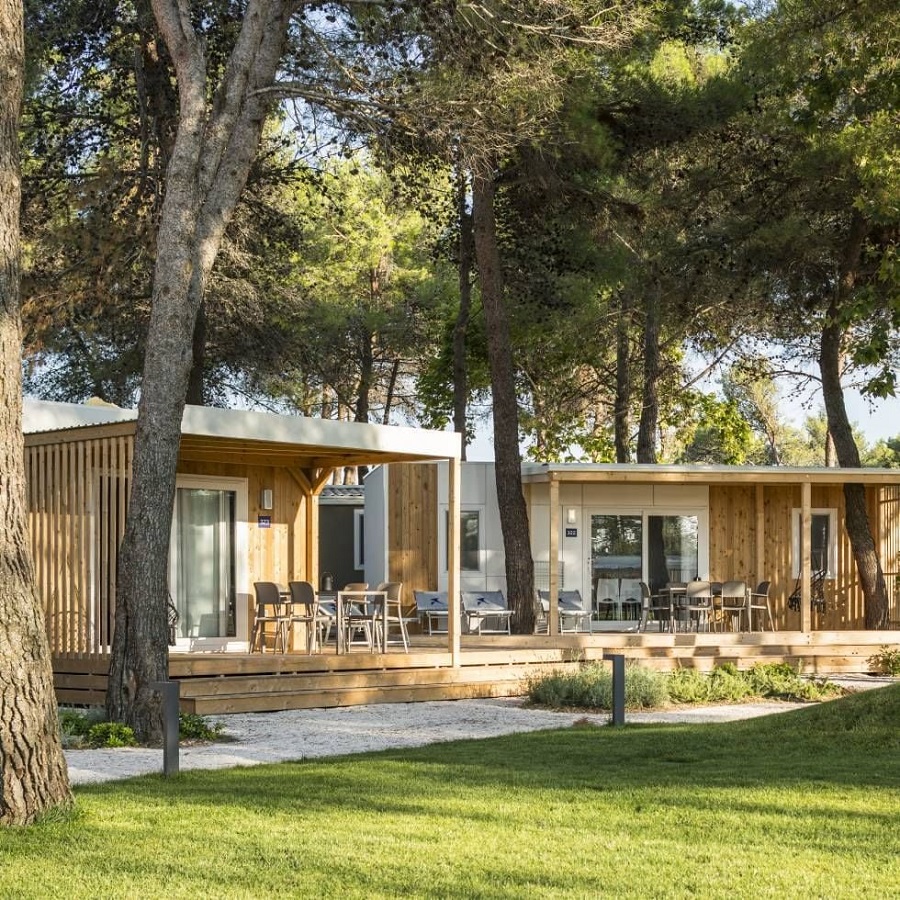
DIGITAL NOMAD VALLEY ZADAR OFFICIAL ANNOUNCEMENT
I believe that everyone in this group knows that Croatia has a lot to offer to digital nomads. From natural beauty to culture, architecture, gastronomy, and quite importantly, the Mediterranean lifestyle.
However, we also recognize that the attractiveness of the country is not enough on its own, it’s the feeling of community that matters to digital nomads and remote workers. As moderators of this group, are working hard to empower the DN community in Croatia.
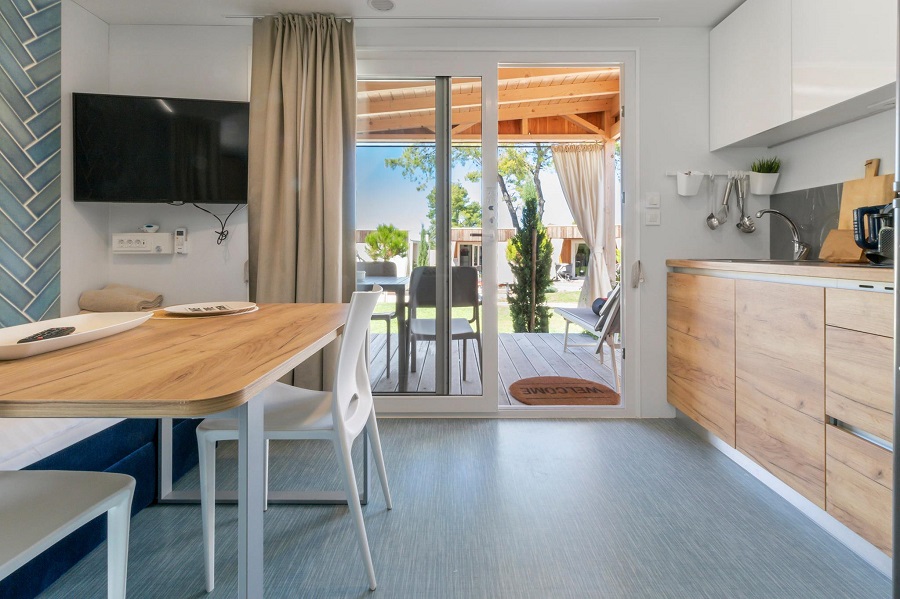
That is why I am very happy to announce a project which would, hopefully, attract even more digital nomads to visit this beautiful land and create strong and lasting communities around the country.
As a CEO of grabAhome, in partnership with Falkensteiner H&R, I proudly present Digital Nomad Valley Zadar!
At one of the most beautiful resorts, in one of the most prominent cities in Croatia, we are organizing the first curated digital nomad community in Croatia.
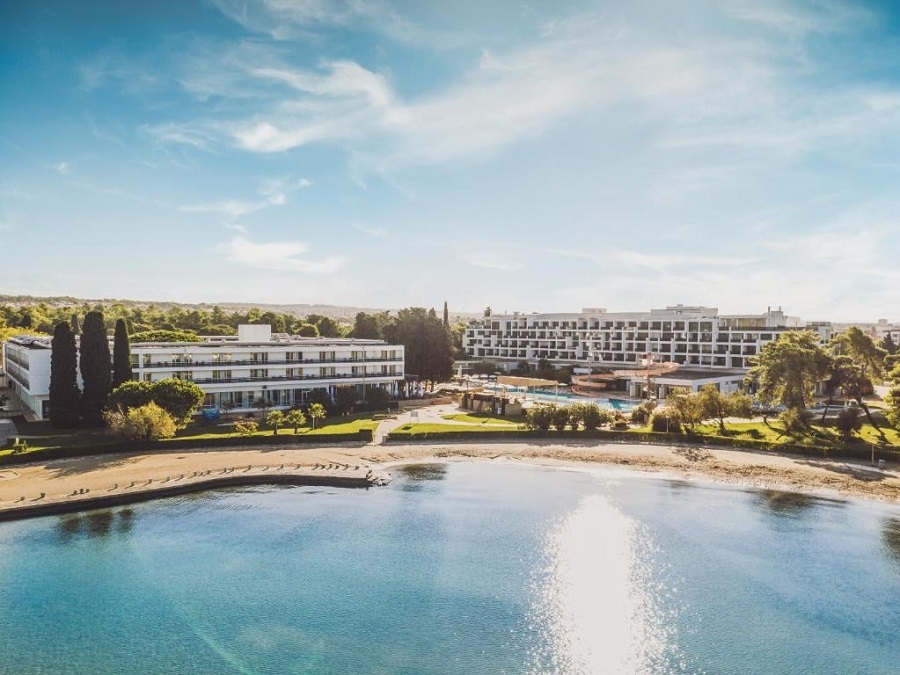
Starting October 10th, by joining the program you will get:
- Premium mobile homes with solo or coliving options
- Exclusive coworking office
- Community manager
- Free access to Spa, Gym, and indoor pool
- Exclusive events (organized by us and the community)
- #discordcommunity channel
- Partner discounts
- Most importantly, a great community of like-minded people
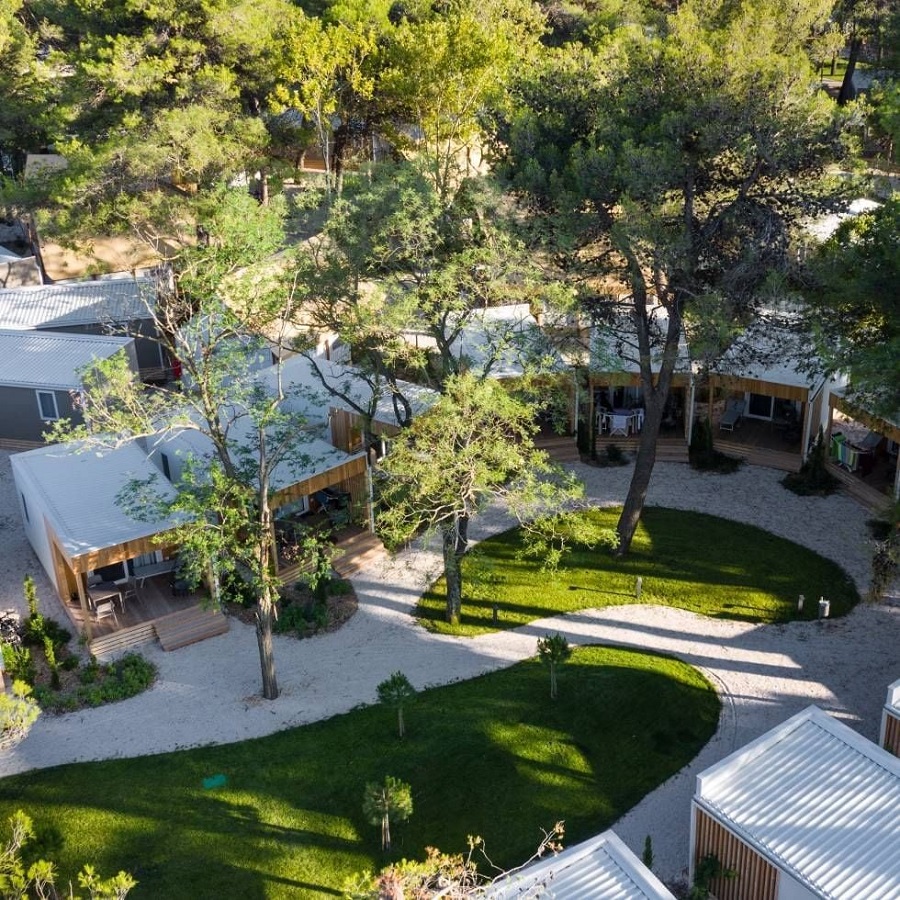
JOIN US AT www.workremotelycroatia.com
Minimum 2-week stay. Starting at €130 per week, we believe that everyone will be able to find an accommodation option that suits them.
We are also able to offer the First 15 digital nomads a 15% discount for the first two weeks of stay!
This project is a part of a new initiative from grabAhome called Work Remotely Croatia, where we hope to build and support several communities around Croatia in order to promote and advocate sustainable tourism in Croatia. This project starts on October 10th until 31st March, with the possibility of an extension!
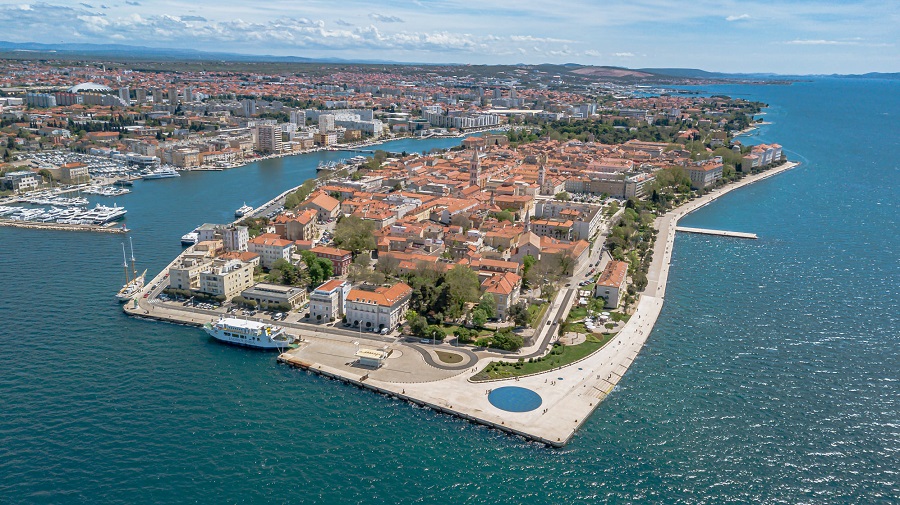
Special thanks to Falkensteiner H&R for offering long-term rentals just for the purpose of this project, and to Digital Nomad Association Croatia and Zadar Tourist Board for supporting this project.
It sounded like a fantastic initiative - and it is - and TCN was the first to publish the announcement, and the story was soon picked up by global media such as, for example, Euronews.
Zadar Valley co-founder Mario Mrksa gave a very good interview with TCN just before the launch, outlining the project and what nomads could expect at Zadar Valley. With over 200 applications in the first 10 days, it seemed that all was heading in the right direction.
And then things got a little strange - to me at least, someone who has been following the Croatian DN scene for over two years. Zadar Valley opened, but there was no online presence or feedback whatsoever that I could see. And I looked quite hard.
Then some days later, something even stranger, as an article by the Croatian National Tourist Board (HTZ) appeared in Slobodna Dalmacija. This is the first time I had seen HTZ promoting a private enterprise in all my time in Croatia.
To put it in context, long before I had any issues with the Croatian National Tourist Board, back in 2015 I wrote my most successful article ever. 25 Reasons Never to Visit Croatia was visited more than 1 million times, covered by every Croatian (and some international) media, shared by almost every local and regional tourist board.
But not by the Croatian National Tourist Board, which actually deleted links to the article when people posted on their Facebook page. I was a little upset, so I complained to the Director's office (a former director, not the current one). This was part of the reply:
The Croatian National Tourism Board is a national tourist organization founded with a view to promoting and creating the identity of Croatian tourism. The mission also includes the planning and implementation of a common strategy and the conception of its promotion, proposal and the performance of promotional activities of mutual interest for all subjects in tourism in the country and abroad, as well as raising the overall quality of the whole range of tourist services in the Republic of Croatia. Therefore, we cannot promote commercial subjects based on individual offer of tourist services.
A fairly clear - if short-sighted - policy, but definitely a strong guideline. Which is why it was so strange to see the article in Slobodna.
Things got even stranger at the end of November. With still nothing online about life at Zadar Valley, a hastily arranged press conference on November 28 to officially launch Zadar Valley had a star cast, including the Head of Global PR of the Croatian National Tourist Board, the Mayor Zadar, and the local MEP. Mario invited me to the press conference a couple of days before, but given my ongoing lawsuits with one of his star guests, I declined as I did not want to distract attention from the project.
By contrast, the award-winning Zagreb Digital Nomad Week and Dubrovnik Digital Nomads-in-Residence barely (if at any) got an official mention from the Croatian National Tourist Board. Odd.
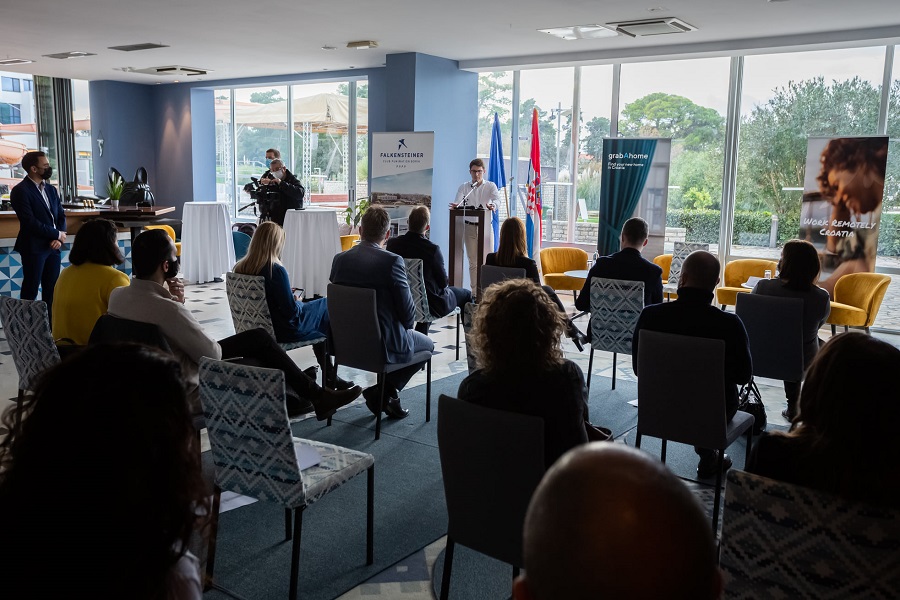
But I did meet him and his Zadar Valley partner, Vedran, for a beer in Zagreb to discuss progress. And there was good progress, they informed me, as well as inviting me down to visit.
I decided to take him up on the offer, and planned a quick visit in mid-December. But I also asked him to send an update on the project, as well as a quote, and some photographs of life in Zadar Valley. This is what Mario sent me, published in full:
RECAP
Since October 2021, we have welcomed more than 20 digital nomads to the Valley. While many are from Europe (England, Germany, Czechia, Sweden); DNs also joined us from the Americas (USA, Brazil) and East Asia. A few DNs extended their stays at the Valley by several weeks. While many residents work in IT, creative, and on start-ups; several also work remotely for employers at regular 9 to 5 jobs.
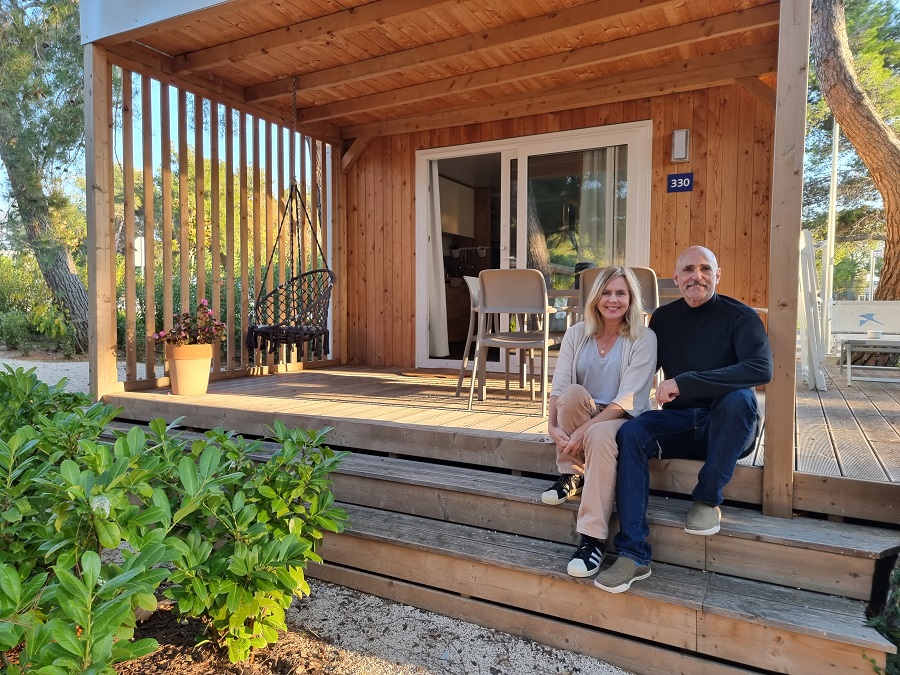
In partnership with the expat and local community, we have organized meetups at bars and nightclubs, group dinners, board games evenings, bike rides, hikes to Velebit and surrounding areas, and even a group Kizomba dance night. Through these events, we have formed friendships with long-term Expats and DNs in the area.
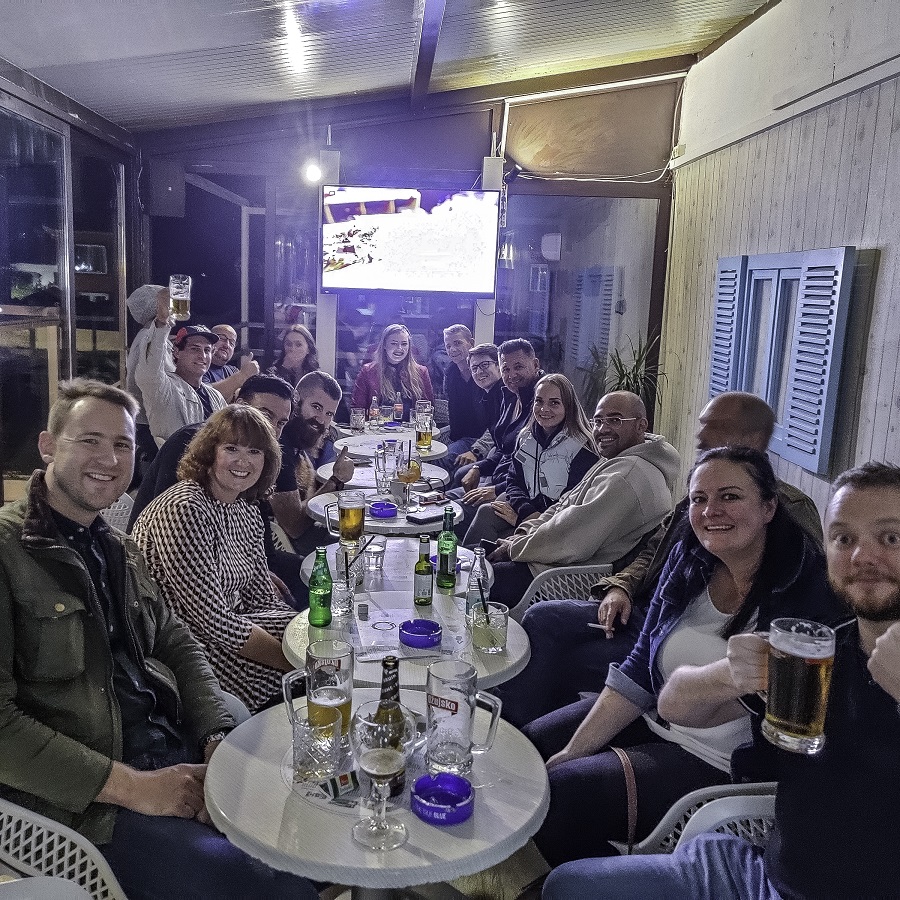
In November, Gillie Sutherland joined the Valley as Wellness Ambassador. She holds daily Yoga classes, often on the beach, and conducts seminars on nutrition and healthy living.
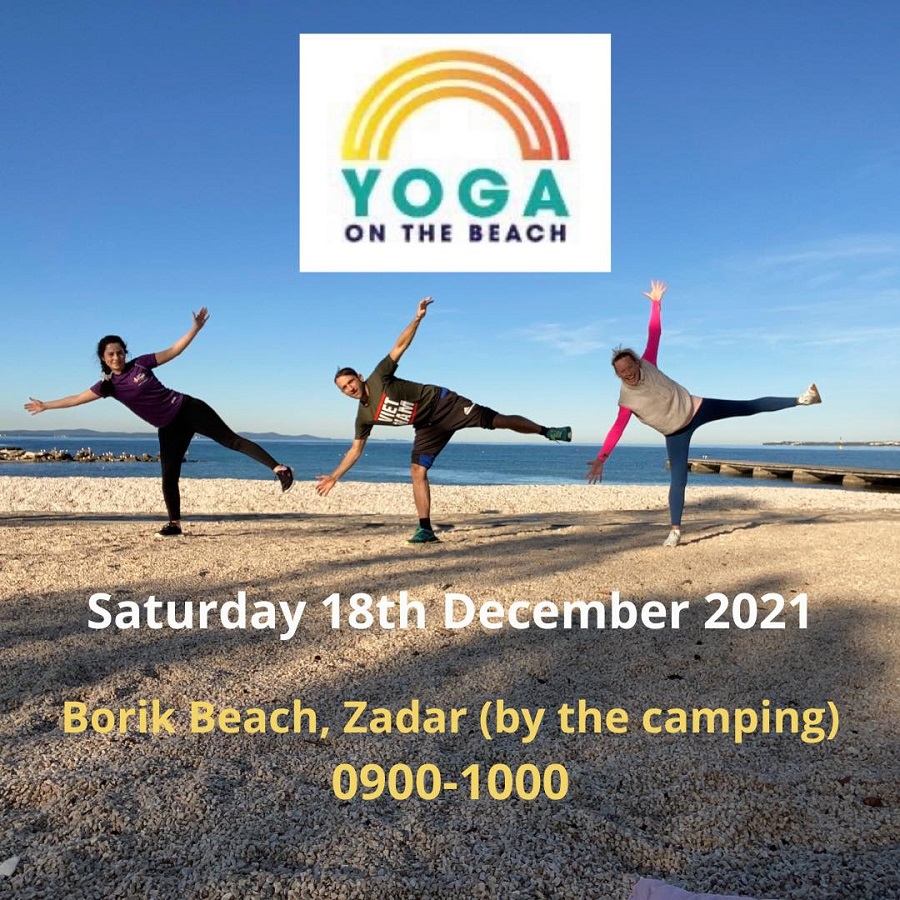
We have 14 new DNs coming at the beginning of January and expect Steve Tsentserensky and Dean Kuchel to join us, which are already well recognized within DN community in Croatia. In addition to building the community, organizing meetups and excursions, we are planning several local experiences (Croatian traditions and crafts) and a series of comprehensive spa and wellness packages.
"We are very proud of what we achieved within the first 75 days of the Digital Nomad Valley project. Even though we managed to bring the first batch of nomads to our small "village", we're most proud of seeing digital nomads and remote workers coming to the City of Zadar just because they heard about a new DN community here.
Many of them decided to stay until the beginning of Summer. It's mesmerizing to think that, just because of this project, we managed to influence people to choose a destination they probably never heard of for working remotely. We accomplished putting Zadar on the DN map, and that's just a start." Mario Mrksa.

My visit in mid-December was hardly going to be the peak season for nomads in Zadar Valley, and so it proved. Community Manager Forrest Stilin, a very friendly and enthusiastic American returning to his Croatian roots, showed me around on a gorgeous December late morning. He is clearly very enthusiastic about the project and very keen to see the community develop with the arrival of a bigger group of nomads in January. At the time of my visit, there was just one nomad at Zadar Valley (all photos in this article are not from my visit, but supplied by Zadar Valley).
The community is building slowly, with outdoor activities such as hiking proving a hit.
And there is a definite plus when it comes to the spa.
The Falkensteiner hotel partner has given free spa access to every resident of Zadar Valley.
A nice addition for sure. There is also a coworking space in the hotel, which had a couple of people working in it when we visited. As for the valley itself, it is a little hard to comment on it, as we didn't actually see anybody as we walked around.
But the community is building slowly, and Zadar Valley has signed up a few local partner service providers, who are offering special DN programmes and discounts. This is something that will presumably grow in time.
Is Zadar Valley for me? Personally I would prefer a little more life and community, but it is hard to judge on a visit in December. There certainly needs to be more information and social media posting about, and the arrival of the Dean Kuchels will certainly help in that regard.
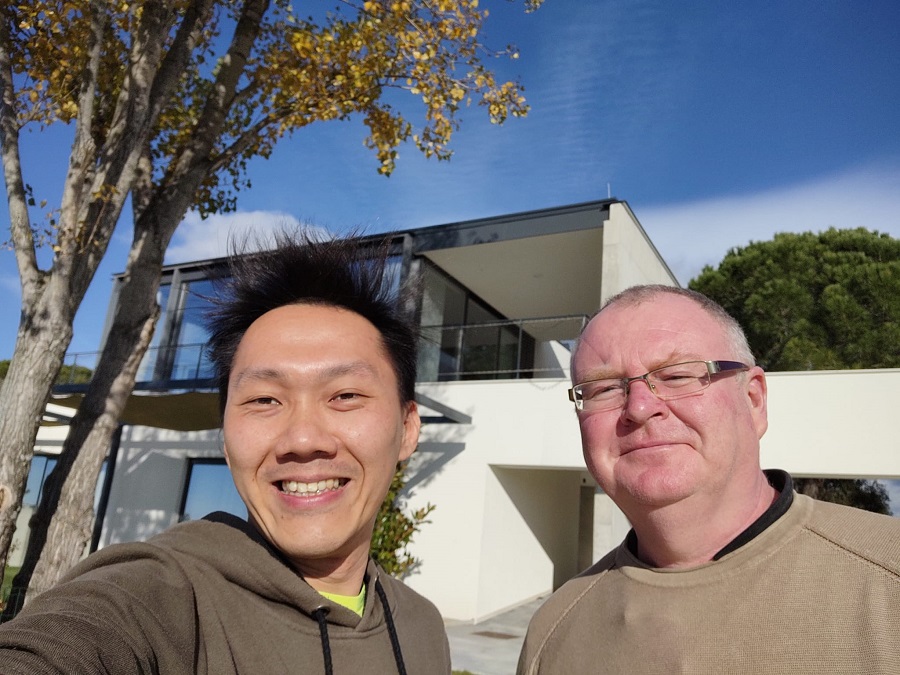
Having spent a pleasant hour with Forrest, culminating in a (with a discount) coffee in a local cafe, I headed back to Zagreb, with one small detour. Mario and Vedran had invited a few nomads to road test a new nomad-friendly villa they had taken on. I agreed to check it out, as well as saying hi to one of the temporary residents - Zagreb Digital Nomad Ambassador for November, Rax Suen from Singapore.
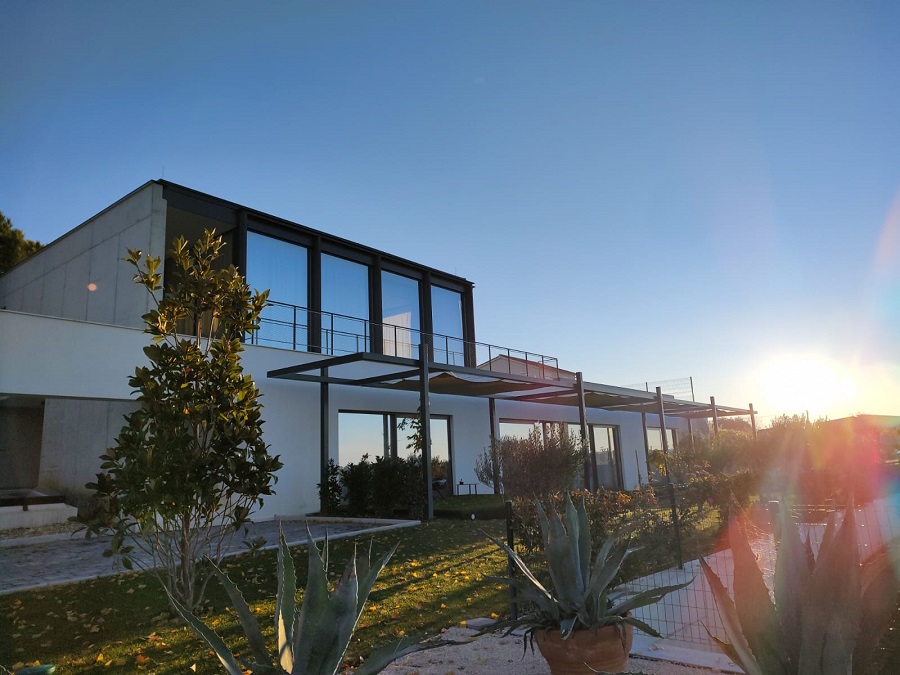
The villa - actually two - is magnificent.
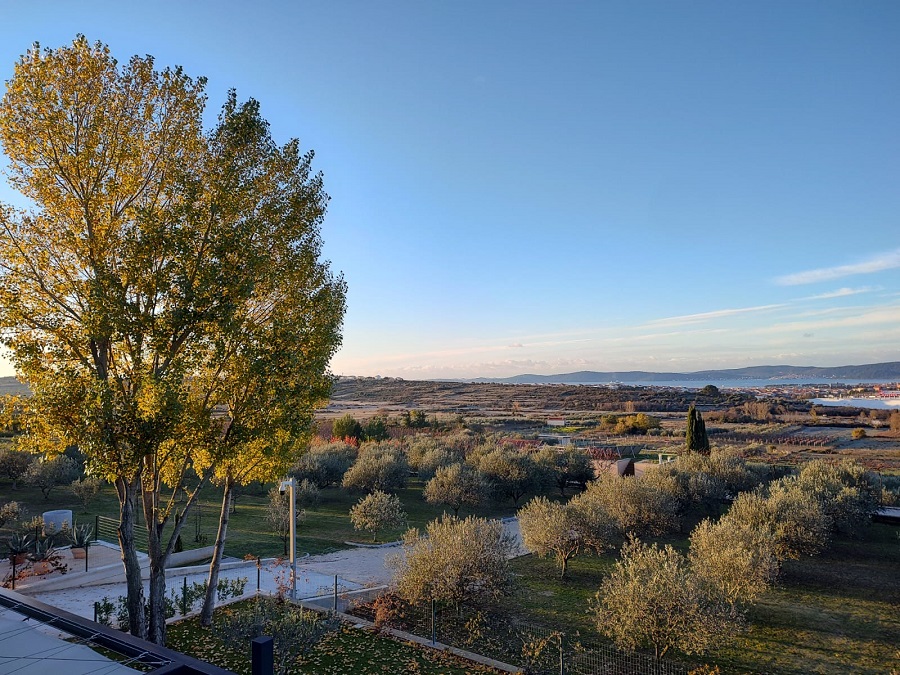
The views pretty special.
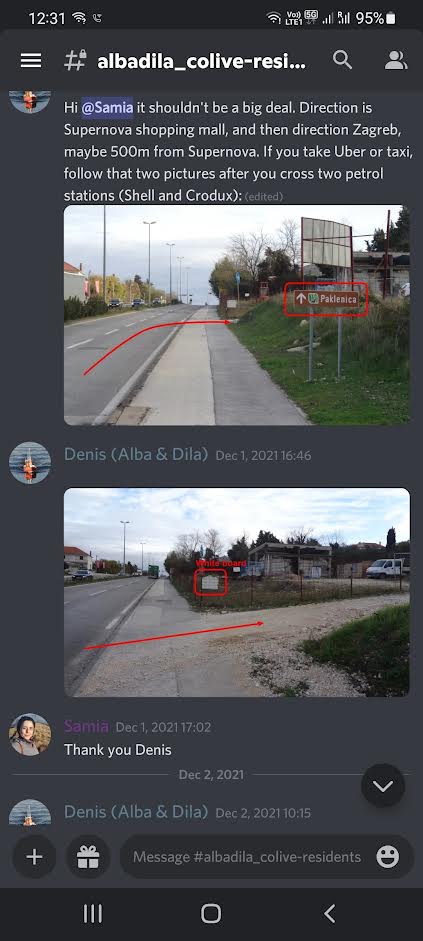
And the location a real disappointment. These are the instructions of how to reach it by car. Once in the villa, life is beautiful indeed. But it is far away from anything else, especially if you do not have a car.
it felt somehow a little like Zadar Valley itself - a great concept, but very much a work in progress.
Having visited, would I classify as a digital nomad village? No, it has some way to go. There are other more developed events, such as Nomad Table in Split, which are bringing communities together.
But the project definitely has potential, and Mario and Vedran should be congratulated on the initiative. Whether or not Zadar Valley will establish itself as a key destination in the DN story remains to be seen, but its very existence is one more stepping stone to putting Croatia on the global digital nomad map.
For more news and features about digital nomads in Croatia, follow the dedicated TCN section.
What to Expect from Croatian Skiers at Snow Queen Trophy 2022 in Zagreb
January 2, 2022 - What can we expect from Croatian skiers at Snow Queen Trophy 2022 on Sljeme in Zagreb this week?
Despite the unusually warm temperatures for this time of year, the Sljeme Red Slope is ready to welcome the best slalom skiers in the world, who will fight for points in the World Cup at the Snow Queen 2022 trophy on January 4 and 5, 2022, reports Novi List.
On this occasion, a virtual press conference was held for the second year in a row because the International Ski Federation (FIS) has stringent anti-epidemic rules that will be even stricter from January 1.
"Everyone who competes, whether vaccinated or recovered from Covid-19, will also need to have a negative PCR test no older than 48 hours to appear at the start of the race," said the Snow Queen Trophy Organizing Committee director and Croatian alpine team rep Vedran Pavlek.
"We are proud to be able to organize the race in these strange times," said the President of the Croatian Ski Association and the Organizing Committee, Miho Glavic.
"Unfortunately, this year we will not have spectators along the track and in the stands," Glavić added, and Vedran Pavlek explained the decision:
"We had to make that decision early, at the end of October, when the number of those infected was rising. It turned out to be a good decision. Here, the New Year's jump tour, perhaps the largest ski competition globally, is being held without spectators. Instead, the focus will be on the best possible track preparation, the best possible TV broadcast, and the best possible results of Croatian skiers.”
Although the current weather conditions are not favorable, there is enough snow on the Sljeme slopes to hold the race, said the head of the Sljeme ski resort Marko Vidović.
“We only started producing artificial snow on December 7 and powered all the infrastructure we have. We did our best. The Red Slope is ready. We have had problems with temperatures for the last week. Fortunately, no southwest wind is fatal for Sljeme," said Vdović and expressed hope that after the end of the Snow Queen, there will be favorable weather conditions that would allow additional snow trails and open ski resorts for citizens.
Good conditions from the first half of December provided Croatian skiers with plenty of space for training.
“Large amounts of snow were made at the beginning of December. Our skiers trained for seven, eight days in fantastic conditions. Unfortunately, training has stopped," said Vedran Pavlek, but also announced that with favorable weather conditions in the coming days, there will again be space for training on the slopes of Sljeme.
"Clear evenings have been announced. There is enough snow on the Red Slope. It's just a matter of preparation in the coming days. We will almost certainly not inject water into the track but only surface water. Our skiers will train on the Green Slope on January 1st and 2nd."
Due to the impossibility of training on Sljeme, the best Croatian skier Filip Zubčić spoke from the Austrian ski resort Reiteralm, where he worked intensively on improving his giant slalom form, with which he was not satisfied, unlike the slalom in Val d’Isere which brought him third place and his first podium in World Cup races in this discipline. After two slaloms, Zubčić is fifth in the slalom rankings.
"The slalom started well this year. One goal was the slalom podium. I ski well; I'm in good shape. Now we are trying to improve our giant slalom form," said Filip, who can hardly wait for the start of the race in which he achieved his best slalom result so far by winning fifth place last year.
“I can say that Sljeme is my home track, so I am always looking forward to the race. I like to come up because I can sleep at home.”
Last year's race, the first pandemic edition of the Snow Queen Trophy, brought great results to Croatian skiers. Along with Zubčić, two others were among the top 15 - Matej Vidović in 12th place and Samuel Kolega in 15th place. Among the 30 was Istok Rhodes in 23rd place.
Although there will be no fans along the track and from the finish arena, Vedran Pavlek believes a similar scenario can be repeated this year.
"I believe that their long-term skiing on Sljeme will be an advantage. Even though there are no fans, skiing at home is an additional incentive. This may be an opportunity for Leona to join you."
Leona Popović is currently the best Croatian female skier, who has constant points in slalom races this season, and won 14th place on Wednesday in Lienz, Austria, with the fifth-best time in the second run.
"I did not ski the first ride as I imagined. I knew I could do a lot better, and I had a great second run. We had good training on Sljeme. I think we prepared well," said the 24-year-old from Mrkopalj, who has never reached the second run on Sljeme. The closest was in 2020 when she won 31st place in the first run and missed second place by nine-hundredths of a second.
"I wouldn't bet on Sljeme, we're not friends, but I'll do my best."
Along with Leona Popović, 17-year-old Zrinka Ljutić will be again at the start of the Snow Queen. She was four-hundredths of a second out of the second run in Lienz, which is also a good announcement that she might win her first World Cup points on Sljeme.
"Leona has made a really serious series; she is progressing slowly and towards the first strong group. She still has to get used to the new environment in the World Cup. I do not doubt that she will have a great skiing career; she needs to be patient," said Vedran Pavlek.
The third Croatian representative is Andrea Komšić from Zagreb.
Last season's World Cup race was the most-viewed World Cup race and was watched live by 26.7 million spectators, more than the legendary downhill race in Kitzbuehel. So the Snow Queen organizers can be happy for a good time and placement within the New Year's jump tour in Innsbruck, as it will be this year.
"It is a reward for everyone and an additional incentive to work in the future," said Pavlek.
The first run is scheduled for 12:30 pm, and the second will begin at 4:05 pm. It will be the 16th edition of the women's slalom on the Red Slope, while on January 5, male skiers will fight for the 13th time. The start of the first run is at 3:30 pm, and the second is at 6:40 pm.
Along with Filip Zubčić, Matej Vidović and Samuel Kolega, Leon Nikić and Tvrtko Ljutić will be at the start in the expanded Croatian contingent, and the sixth place could be taken by the former world junior slalom champion and returnee after Istok Rodeš's severe elbow injury.
"Istok had an atypical injury; he had to undergo reoperation. He is recovering well, and the decision on whether to perform will be made after the New Year, after training on the Green Slope, maybe even the day before the race."
Unfortunately, Elias Kolega will not be among those on the starting list for the second year in a row.
"He had two serious injuries, two fractures. He has not healed perfectly; he still feels pain in his lower leg. But, for him, the season is over, and we hope that he will be able to start training in the spring," Pavlek revealed.
PCR testing will also decide who will be at the start of the race. The coronavirus stopped Mikaela Shiffrin from performing in Lienz. Still, Vedran Pavlek received indications that the leading skier of the World Cup and co-recorder of Sljeme races with four victories could return to competitions on the Red Slope.
"They inquired about training opportunities on Sljeme. She is waiting to be released from isolation, which is within the competence of the Austrian authorities. Nevertheless, her camp is very optimistic about her competing on Sljeme."
The Minister of Tourism and Sports, Nikolina Brnjac, and the Deputy Mayor of Zagreb Luka Korlaet, expressed their support for the race with their video messages, emphasizing the importance of this sporting event for the promotion of Croatia and Zagreb.
To read more about sport in Croatia, follow TCN’s dedicated page.


